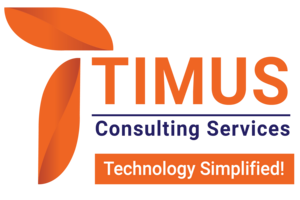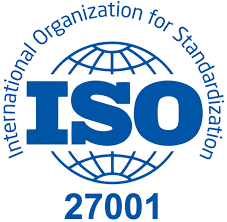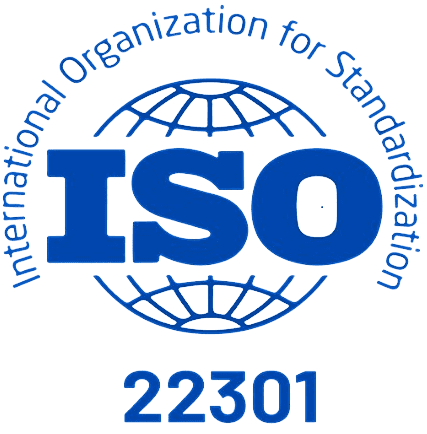Introduction
In today’s digital age, the proliferation of technology in business operations has brought unprecedented opportunities and efficiencies. However, this increased reliance on technology also introduces significant risks. IT risk and cybersecurity have become critical areas of focus for organizations worldwide, as cyber threats continue to evolve in sophistication and frequency.
What is IT Risk?
IT risk refers to the potential for losses related to technology infrastructure, information systems, and data. These risks can stem from various sources, including cyber-attacks, system failures, human errors, and natural disasters. IT risk can impact an organization in numerous ways, such as financial losses, reputational damage, regulatory penalties, and operational disruptions.
Key types of IT risks include:
- Operational Risk: Failures in internal processes, systems, or people.
- Compliance Risk: Violations of laws, regulations, or internal policies.
- Strategic Risk: Adverse business decisions or failure to respond to changes in the business environment.
- Financial Risk: Monetary losses due to IT system failures or cyber-attacks.
What is Cybersecurity?
Cybersecurity is the practice of protecting systems, networks, and data from digital attacks. It involves implementing measures to prevent unauthorized access, data breaches, and other cyber threats. Cybersecurity encompasses a range of technologies, processes, and practices designed to safeguard the confidentiality, integrity, and availability of information.
Key components of cybersecurity include:
- Network Security: Protecting the integrity of networks and data transmitted over them.
- Information Security: Ensuring the confidentiality and integrity of data in storage and transit.
- Endpoint Security: Securing devices such as computers, mobile devices, and servers.
- Application Security: Protecting applications from vulnerabilities that could be exploited by attackers.
- Identity and Access Management (IAM): Ensuring that only authorized individuals have access to systems and data.
- Incident Response: Developing and implementing strategies to respond to and recover from cyber incidents.
The Intersection of IT Risk and Cybersecurity
The relationship between IT risk and cybersecurity is intrinsically linked. Effective cybersecurity measures help mitigate IT risks by protecting against cyber threats that can disrupt operations and compromise data integrity. Conversely, understanding IT risks enables organizations to prioritize and allocate resources to the most critical areas of cybersecurity.
Key Strategies for Managing IT Risk and Enhancing Cybersecurity
-
Risk Assessment and Management:
- Conduct regular risk assessments to identify and evaluate IT risks.
- Develop a risk management plan to prioritize and mitigate identified risks.
- Continuously monitor and review risks to adapt to new threats and changes in the IT environment.
-
Implement Robust Cybersecurity Policies:
- Establish comprehensive cybersecurity policies and procedures.
- Ensure policies are aligned with industry standards and regulatory requirements.
- Regularly update policies to reflect the evolving threat landscape.
-
Invest in Advanced Security Technologies:
- Deploy cutting-edge security solutions such as firewalls, intrusion detection systems, and encryption.
- Utilize artificial intelligence and machine learning to detect and respond to threats in real-time.
- Implement multi-factor authentication to enhance access control.
-
Employee Training and Awareness:
- Conduct regular cybersecurity training for employees to recognize and respond to cyber threats.
- Promote a culture of security awareness and encourage reporting of suspicious activities.
- Simulate phishing attacks to test and improve employee response to real threats.
-
Incident Response and Recovery:
- Develop and test an incident response plan to quickly address and recover from cyber incidents.
- Establish a dedicated incident response team with clearly defined roles and responsibilities.
- Conduct post-incident reviews to identify lessons learned and improve future responses.
-
Collaboration and Information Sharing:
- Collaborate with industry peers, government agencies, and cybersecurity organizations to share threat intelligence.
- Participate in information-sharing initiatives to stay informed about emerging threats and best practices.
- Engage with third-party security experts to conduct regular security audits and assessments.
Conclusion
As cyber threats continue to grow in complexity and frequency, organizations must prioritize IT risk management and cybersecurity. By understanding the interconnected nature of these areas and implementing comprehensive strategies, businesses can safeguard their critical assets, maintain operational resilience, and protect their reputation in the digital age.
Embracing a proactive approach to IT risk and cybersecurity is not just a necessity; it is a fundamental aspect of modern business strategy. Investing in robust security measures, fostering a culture of awareness, and staying ahead of emerging threats will empower organizations to navigate the digital landscape with confidence and resilience.
About us
We are Timus Consulting Services, a fast-growing, premium Governance, Risk, and compliance (GRC) consulting firm, with a specialization in the GRC implementation, customization, and support.
Our team has consolidated experience of more than 15 years working with financial majors across the globe. Our team is comprised of experienced GRC and technology professionals that have an average of 10 years of experience. Our services include:
- GRC implementation, enhancement, customization, Development / Delivery
- GRC Training
- GRC maintenance, and Support
- GRC staff augmentation
Our team
Our team (consultants in their previous roles) have worked on some of the major OpenPages projects for fortune 500 clients across the globe. Over the past year, we have experienced rapid growth and as of now we have a team of 15+ experienced and fully certified OpenPages consultants, OpenPages QA and OpenPages lead/architects at all experience levels.
Our key strengths:
Our expertise lies in covering the length and breadth of the IBM OpenPages GRC platform. We specialize in:
- Expert business consulting in GRC domain including use cases like Operational Risk Management, Internal Audit Management, Third party risk management, IT Governance amongst others
- OpenPages GRC platform customization and third-party integration
- Building custom business solutions on OpenPages GRC platform
Connect with us:
Feel free to reach out to us for any of your GRC requirements.
Email: Business@timusconsulting.com
Phone: +91 9665833224
WhatsApp: +44 7424222412
Website: www.Timusconsulting.com





